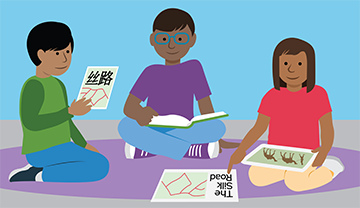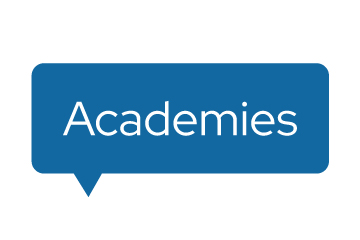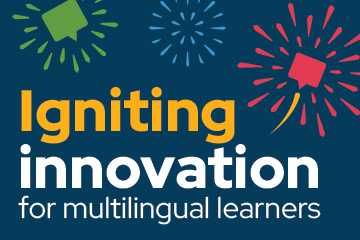Many literacy programs were not designed to effectively use multilingual students’ knowledge, skills, and strengths. This Snapshot is the fifth in a five-part series that provides insights from relevant research and suggests ways to engage the significant strengths that multilingual learners bring to their literacy development.
How can we ensure comprehensive literacy instruction for multilingual learners?
As important as foundational skill development is, reading is so much more! Of course, we want students to learn to decode quickly and accurately, to build word knowledge, and to flexibly and effectively use a variety of comprehension strategies. It is important, though, to also keep the end goal in mind. Reading scores and levels show progress in the development of foundational skills, but are only markers toward an important objective — reading is for the purpose of expanding one’s world view and being able to critically examine and act on the world (Freire & Macedo, 1987). All students need literacy instruction that balances skill development with opportunities to learn and think critically about the world. Literacy instruction can either perpetuate or challenge inequities, so fostering equitable literacy learning requires intentionality and commitment. These research highlights emphasize the importance of instruction that keeps multilingual students moving toward that end goal.
“How can reading instruction best help students develop and flourish as literate beings in the ways that matter most?” Aukerman & Schuldt, 2021, p. S86
Expand students’ understanding of themselves and of the world.

No matter where your students live, they can expect to interact with a larger world as they move through their education and into their adult life and work. Many of your multilingual students likely already do, perhaps having family members in different locations or sharing different cultural backgrounds. This cultural and experiential diversity that multilingual students bring to the classroom can be positioned as a learning resource for others, sometimes providing firsthand or (through interaction with their families) second-hand perspectives on alternate ways of understanding issues or solving problems. Books can also allow your students to view and experience different environments, learn about the multicultural nature of the world in which they live and see their own experiences reflected in positive or negative ways (Bishop, 1990; McNair & Edwards, 2021). To leverage this potential in your classroom, you could prioritize diversity in the cultures, language backgrounds and worldviews represented in the texts and authors included in your curriculum. When selecting texts, research the authors to guarantee authentic representation and consider how cultural perspectives, identities and experiences are represented. You could also ensure that multilingual learners have opportunities for self-affirmation and for understanding others’ diverse experiences and worldviews.
To make a broad range of perspectives available for student reflection
- Read broadly about an issue to prepare students to discuss differing perspectives; whether in the text or among students in the classroom.
- Connect classroom instruction to authentic situations and real-world challenges.
Build capacity for critical reflection.
Reading broadly exposes students to ideas that may be contradictory. This can be confusing for students if most of their literacy instruction has emphasized reading to find answers. Students need support in learning how to compare ideas, assess the quality of reasoning an author has employed and provide ideas for potential solutions. Literacy instruction should support the development of students’ capacities to access, comprehend, use, evaluate and critically reflect on texts. All students, including emergent readers, can and should be engaged in reflecting critically on ideas.
“In the context of schooling, I will argue for the essentiality of students learning to read closely and critically… I believe schools offer unique opportunities for young people to learn skills they are not likely to learn in everyday life — to learn skills that embody capital they can navigate as they prepare for participation as adults in the workforce, and capital that can serve as resources for engaging in civic debate.” (Lee, 2014, p. 9)
To help students develop the skill and practice of critical reflection
- Support students in identifying and providing text-based evidence of authors’ perspectives.
- Use open-ended questions and discussion guidelines to help bring out divergent, imaginative ideas and analyzing and comparing ideas.
Provide a guided experience when working through complex issues.
In the complex world we live in, many of the issues that concern us are multilayered and are not understood quickly or easily. Researcher Carol Lee points out that all students, but particularly those who are vulnerable due to a minority status, need the skills and dispositions to persist in making sense of complex problems and evaluating possible actions and solutions. Lee asserts that reading poses emotional challenges which, when supported by instruction, can strengthen the skills and dispositions needed to persist in understanding complex issues. These emotional demands of reading include willingness to wrestle with uncertainty, to wrestle with integrating personal goals into rigorous reading and to persist when reading gets hard (Lee, 2014).
To support students in this productive struggle
- Elicit students’ ideas about how applying the information or concepts from the text can have a positive or negative impact on different groups or communities, including their own.
- Discuss with students what they learned from the text(s) and how they can use that to further their own goals or express their own perspectives.
More Learning
- The National Committee for Effective Literacy has multiple resources, including the podcast series Effective Literacy.
- ¡Colorín colorado! offers a video with Rudine Sims Bishop where she discusses the importance of using diverse books.
- The Minnesota Humanities Center provides guidance and access to materials to address and support the efforts of integrating the many voices are missing from the conversation.
References
Aukerman, M., & Chambers Schuldt, L. (2021). What matters most? Toward a robust and socially just science of reading. Reading Research Quarterly, 56, S85-S103. https://ila.onlinelibrary.wiley.com/doi/10.1002/rrq.406
Bishop, R. S. (1990, March). Windows and mirrors: Children’s books and parallel cultures. In California State University reading conference: 14th annual conference proceedings (pp. 3-12). https://files.eric.ed.gov/fulltext/ED337744.pdf
Freire, P., & Macedo, D. (1987). Reading the word and the world. Routledge. https://www.taylorfrancis.com/books/mono/10.4324/9780203986103/literacy-paulo-freire-donaldo-macedo
Lee, C. D. (2014). The multi-dimensional demands of reading in the disciplines. Journal of Adolescent & Adult Literacy, 58(1), 9-15. https://ila.onlinelibrary.wiley.com/doi/10.1002/jaal.316
McNair, J. C., & Edwards, P. A. (2021). The lasting legacy of Rudine Sims Bbishop: Mmirrors, windows, sliding glass doors, and more. Literacy Research: Theory, Method, and Practice, 70(1), 202-212. https://journals.sagepub.com/doi/10.1177/23813377211028256





